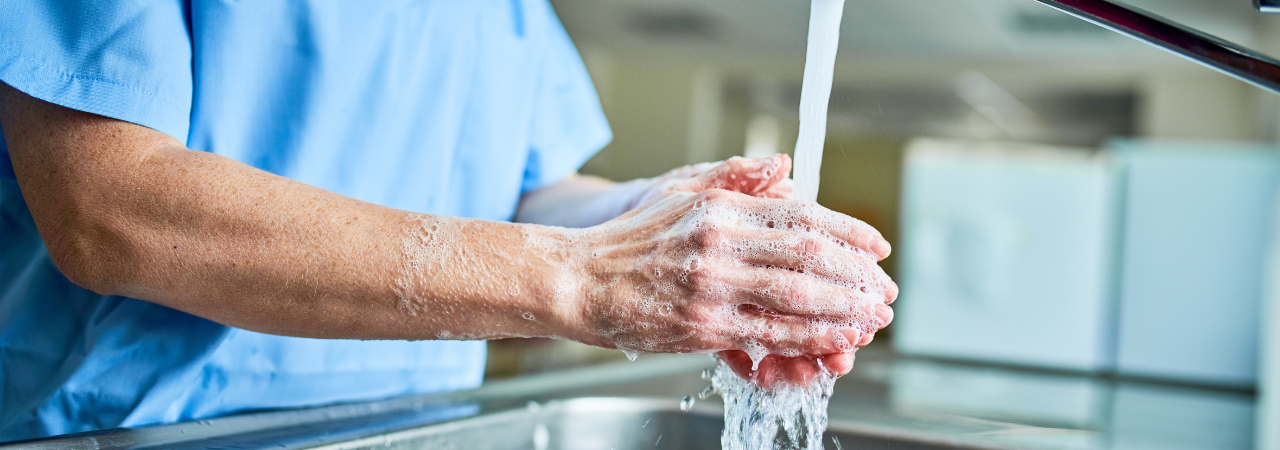The evolution of infection control in dentistry

Infection control is highly prioritized in dentistry. Every office must follow strict protocols to ensure a safe and sanitary environment for patients and staff. Although each member of the team follows these protocols, dental assistants are often responsible for learning about proper procedures and implementing an infection control plan in their practices.
But as hard as it can be to imagine dental staff without gloves and masks, infection control wasn’t always emphasized the way it is today. In honor of Dental Infection Control Awareness Month, here’s a brief history of infection control in dentistry and how it evolved over time.
Early dentistry
For centuries, infectious diseases were poorly understood and, as a result, were among the most common causes of death. That began to change in the 1800s. The benefits of hand-washing in reducing the spread of infection were discovered in the mid-19th century. In the latter half of the 1800s, scientists such as Louis Pasteur and Robert Koch conducted groundbreaking research in microbiology and bacteriology, discovering that microorganisms like viruses and bacteria spread infections. Led by the efforts of British physician Joseph Lister, hospitals began using aseptic techniques, including hand-washing, keeping wounds covered, and wearing rubber gloves, to prevent infection during surgeries.
Eventually, these infection control discoveries were adopted in dentistry. In an 1876 paper, British dentist Ashley Barrett discussed using antiseptic practices to prevent infections during root canals. American dentist W. D. Miller, who is regarded as the first oral microbiologist, theorized that cavities are caused by oral bacteria from sugars. He also discovered and promoted the importance of cleaning and sterilizing dental instruments before reusing them.
Growth of dental infection control
While infection rates in medical and dental settings fell as new safety measures emerged, many of today’s stringent protocols weren’t adopted until later in the 20th century.
Research on the spread of infection through aerosols during the late 1800s eventually prompted changes in dentistry during the 1950s. Among other practices, dental teams began to wear masks and protective glasses, clean and disinfect surfaces between appointments, use autoclaves for disinfecting instruments, and require patients to rinse their mouths with an antibacterial solution before procedures. Practices also began to focus on proper ventilation to help prevent airborne transmission of viruses, bacteria, and other harmful microorganisms and pollutants.
The HIV/AIDS epidemic in the 1980s prompted more changes, as dental infection control became more regulated and industry-wide best practices were established. To mitigate the risk of bloodborne pathogens, the Centers for Disease Control and Prevention (CDC) and Occupational Safety and Health Administration (OSHA) released new guidelines. These included mandating the use of gloves and other protective barriers, which were not previously used during all dental procedures. The guidelines also outlined the proper methods for handling and disposing of needles, syringes, and other sharps.
In 1993, the American Dental Association and the CDC released infection control recommendations for dental practices in the U.S. and regularly updates those guidelines based on new scientific knowledge and research.
Renewed emphasis
Similar to the HIV/AIDS epidemic, the COVID-19 pandemic put infection control in the spotlight. People across the world donned personal protective equipment (PPE) in their everyday lives, and proper hand hygiene became a priority. These weren’t new developments in dental practices, but offices doubled down on their safety protocols during this time.
Led by the frontline efforts of dental assistants, dental practices worked diligently to develop a culture of safety for patients and staff members. Among other tasks, dental assistants were responsible for developing or revising safety protocols, staying up to date on the latest guidance, training staff members, ensuring proper PPE usage and social distancing efforts, and disposing of waste in accordance with local and federal regulations. Many dental assistants also pursued infection control education or certifications, and some were even promoted to the role of infection control coordinator or specialist.
While the worst days of the COVID-19 pandemic are in the rearview mirror, infection control remains paramount in dental offices. All team members are educated and trained on current best practices. Additionally, new technology — such as UV light sterilization devices and air purification systems — constantly emerges to keep offices protected. As more research is conducted, infection control will undoubtedly continue to evolve in the coming years to keep ensuring a safe experience for everyone in the dental office.

